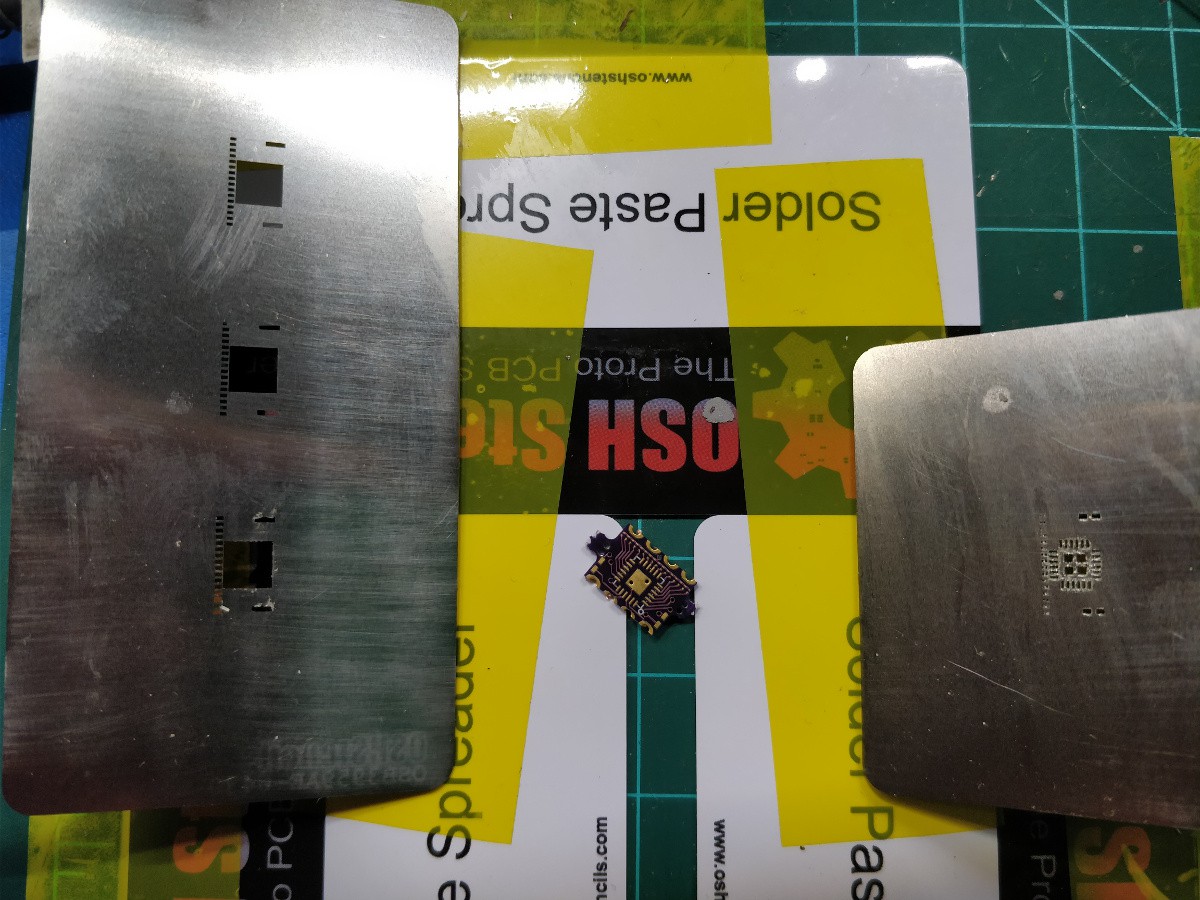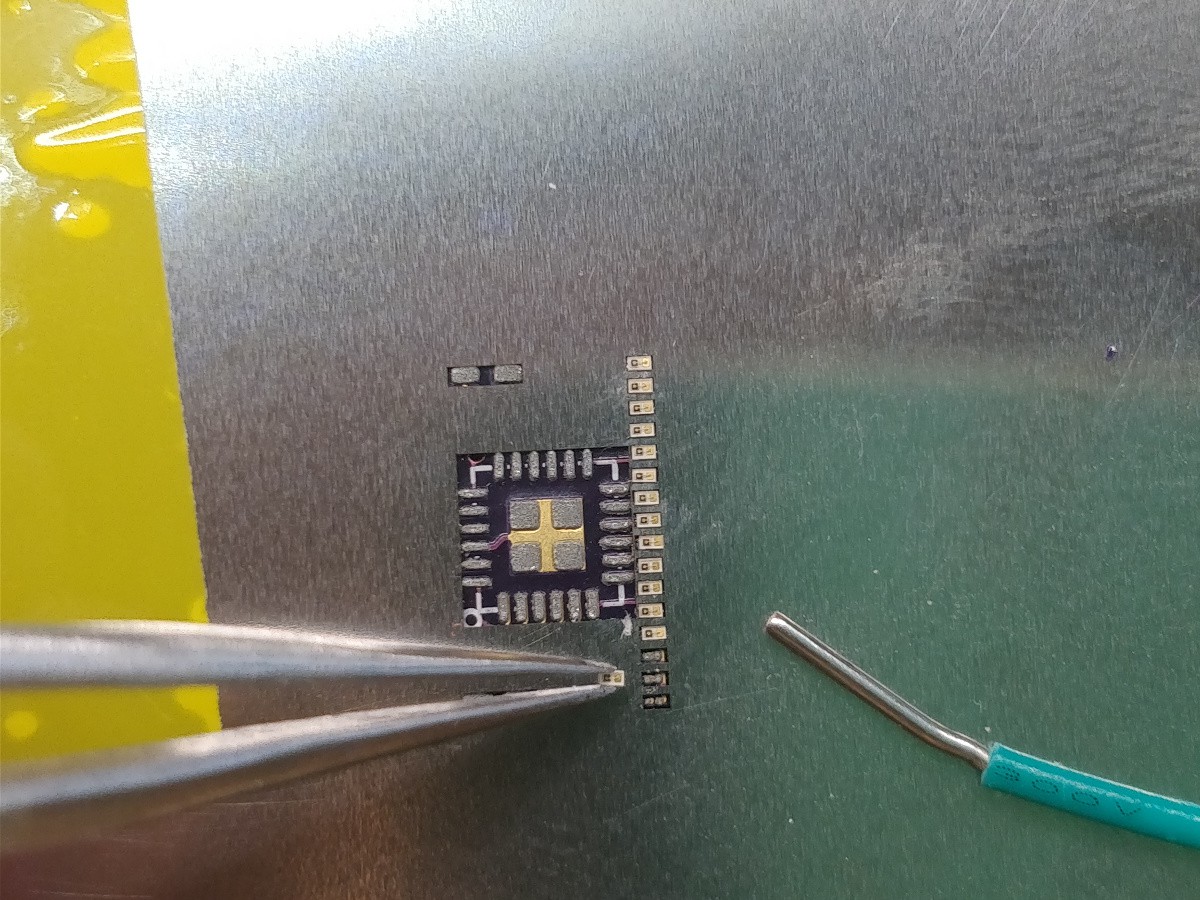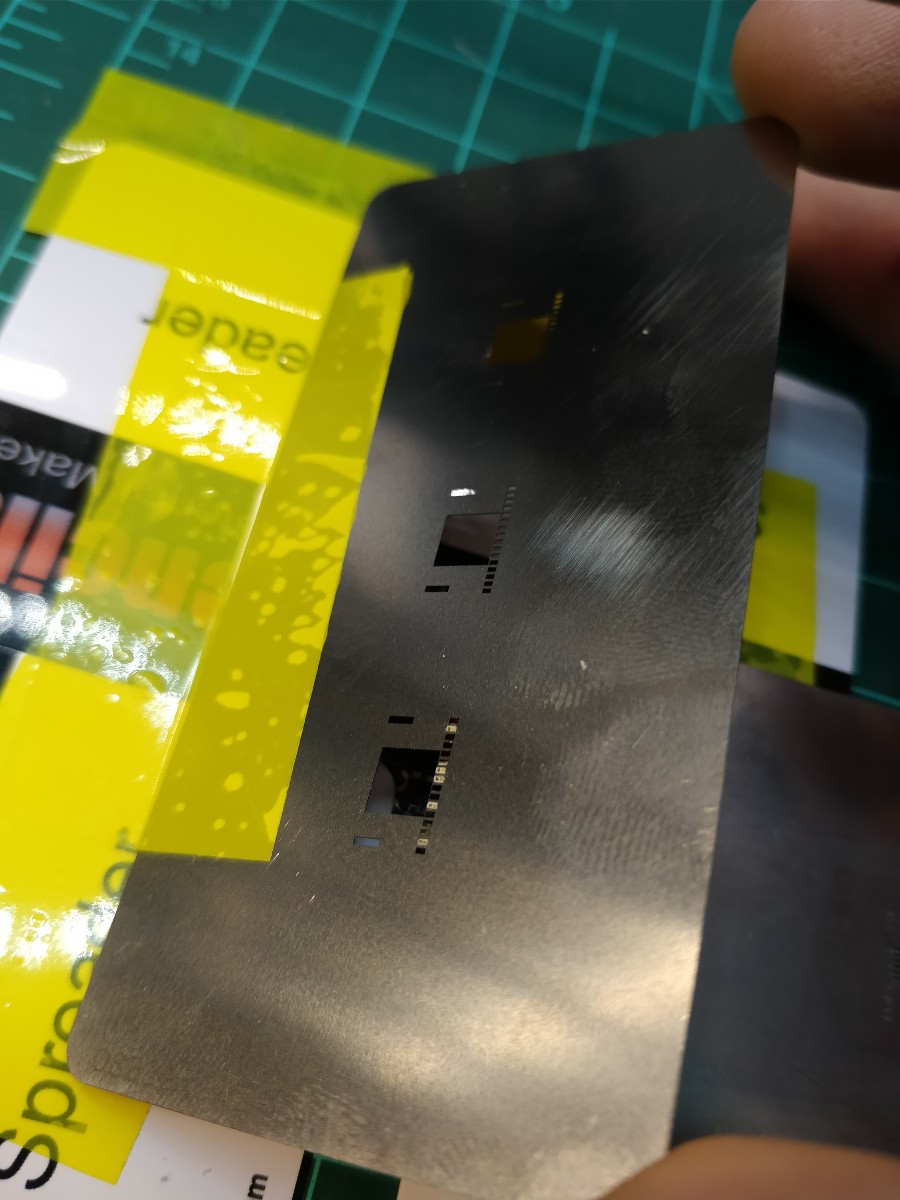I built a handful of Rotovis-Mod1s today. The task ended up being a bit more tedious than I'd hoped, and I usually don't mind 'tedious'. I kept track of time per build and found that typical times ranged from 15 minutes (fast paste and place and zero rework) to well over an hour (replacing half a dozen LEDs, maybe resoldering the TI chip for good measure). Gah.
In the process I did try a few interesting techniques that @Radomir Dopieralski , @davedarko , @Jarrett , @christoph and I discussed last week:

[above, a Rotovis-Mod1 board with a solder paste stenicl on the right and an alignment stencil on the left. They're both carefully taped down so one can be flipped onto the PCB after the other. I think the reason OSHstencils doesn't sell 1/32" alignment jigs is that their paste spreaders are the right thickness for that size PCB. And yes, the actual board gets its mousebites carefully sanded off before assembly...]
I wanted a better method for actually applying the 0201 LEDs to the PCB after paste. I sent a paste Gerber to OSHstencils that fit the outline of each component: extra clearance for the passives and IC, and three different sizes for the LEDs -- nominal (0.65mm x 0.35mm), +0.03mm per dimension, and +0.06mm per dimension. The largest one fit best:

[above, inserting the 14th of 16 LEDs onto a pasted Rotovis-Mod1 board through the alignment stencil. Breadboard jumper for scale... ]
...but the stencil fit was still a little bit tight on a few LEDs:

[GAH NO NO NO NO NO NO THIS IS HORRIBLE]
The issue above -- LEDs sticking in the alignment stencil -- was actually pretty easy to fix; I just lifted the stencil a tiny bit and used tweezers to poke through any LEDs that held on. This worked well and helped me avoid rework on a few (but certainly not all) of the boards. Going 16 for 16 often resulted in a shout of joy, which is one reason I'm doing this on a weekend.
I don't take good care of my SAC305 solder paste; it sits in a syringe on my workbench until I need it, as opposed to being kept in a food-free refrigerator and tossed after 6 months. So I also started mixing a bit of gel flux in with the solder paste so it was a bit more sticky -- maybe 20% flux by volume. This made the QFN paste print look pretty rough, but helped the LEDs stick to the board and survive a trip through the toaster oven. Which, as I've said before, isn't special -- it's just a stock convection toaster oven that I run on preheat mode for ~4 minutes at 205 C.
Rework wasn't pleasant. Lots of hot air and cursing, but I managed to avoid scrapping any boards. Okay, I scrapped one board. And probably two dozen LEDs. Ah well, that's why I bought a ton.
 zakqwy
zakqwy
Discussions
Become a Hackaday.io Member
Create an account to leave a comment. Already have an account? Log In.
Mixing in flux gel probably made it even harder to use the alignment stencil since some of the paste will end up on the stencil. Either way, it's great that you tried this!
Are you sure? yes | no